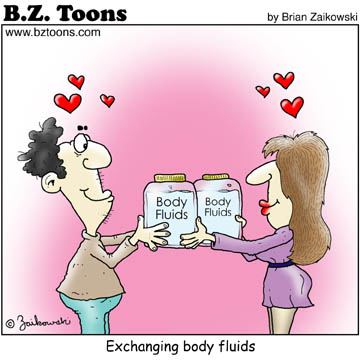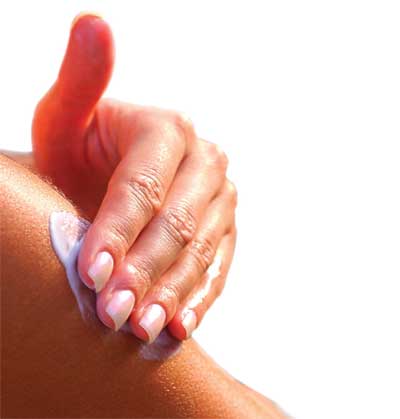The only way to be 100 percent safe from a sexually transmitted or even a socially transmitted disease is to never kiss anyone, never hug anyone, never shower with anyone, never share clothing, razors, toothbrushes, or combs, never have any kind of sex at all with anybody!
Abstaining from sex is the only way to be 100 percent confident of avoiding STD infection.
Q. What is the next best thing to 100 percent safe sex?
A. 99 percent safe sex.
Condoms, when used properly, are highly effective, and can be up to 99 percent safe from the following diseases spread by fluids: HIV, gonorrhea, chlamydia, trichomoniasis. Condoms remain the single most effective way to prevent sexually transmitted dieseases, aside from total sexual abstinence, of course.
Condoms are never quite as effective against diseases that are spready by skin to skin contact such as: genital herpes, human papillomavirus [HPV] infection, syphilis, and chancroid. Other than total sexual abstinence, there may not be an effective way to prevent skin to skin disease transmisson.
Did you know that there have never been any reports of HIV transmission by kissing?
Kissing and/or swapping saliva can, however, give you the following viruses: herpes simplex type 1 (coldsore) virus, herpes virus type 2, Epstein-Barr Virus also known as human herpesvirus 4, mononucleosis, Cytomegalovirus, Streptococcus, common cold viruses, influenzas of all types, measles, meningitis, Gingivitis, pyorrhea, candidiasis or thrush, Coxsackievirus, hepatitis viruses A, B and C, gonorrhea, syphilis or chlamydia.
Kissing and/or swapping saliva can, however, give you the following viruses: herpes simplex type 1 (coldsore) virus, herpes virus type 2, Epstein-Barr Virus also known as human herpesvirus 4, mononucleosis, Cytomegalovirus, Streptococcus, common cold viruses, influenzas of all types, measles, meningitis, Gingivitis, pyorrhea, candidiasis or thrush, Coxsackievirus, hepatitis viruses A, B and C, gonorrhea, syphilis or chlamydia.

Just hugging can be quite dangerous in fact...
The following can be contagious from bedding or sharing clothing or towels: Crabs or Pubic Lice, Molluscum contagiosum, Scabies.Did you know that, when it comes to HIV, that blood is more dangerous than semen? And semen is more dangerous than pre-seminal fluid.
The concentration of HIV determines whether infection may happen. In blood, for example, the virus is very concentrated. A small amount of blood is enough to infect someone. A much larger amount of other body fluids is needed for HIV transmission. (source)
...and it must get into the bloodstream.
It is not enough to come into contact with an infected fluid to become infected. Healthy, unbroken skin does not allow HIV to get into the body; it is an excellent barrier to HIV infection.
HIV can enter only through an opening in the skin such as a cut or sore, or through contact with the mucous membranes in the anus and rectum, the genitals, the mouth, and the eyes. (source)
How much risk are you willing to take?
No-risk safer sex play includes:
masturbation
mutual masturbation
cybersex
phone sex
sharing fantasies
Low-risk safer sex play includes:
kissing
fondling — manual stimulation of one another
body-to-body rubbing — frottage, "grinding," or "dry humping"
oral sex (even safer with a condom or other barrier)
playing with sex toys — alone or with a partner
The highest risk kinds of sex play are:
vaginal intercourse
anal intercourse
Here are some very good sources of information:
How HIV Is Spread
Frequently Asked Question About Condoms And Spermicides
How condoms protect against HIV, chlamydia and more
CDC: Condom Effectiveness - Condom Fact Sheet
Diseases Spread by Kissing
HIV from kissing?
Kissing and HIV
How Safe Is Your Oral Sex?






No comments:
Post a Comment
Note: Only a member of this blog may post a comment.